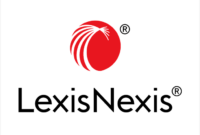Speakers
4 speakers
Date & Time
On Demand
Webinar
If there is one thing we can all count on, it’s change.
Over the last few years, agencies have adjusted how they work, where they work and where they serve citizens and businesses.
A recent survey by Federal News Network found almost 80 percent of more than a thousand responses say they work entirely remotely or in a hybrid set up. Of those, 60 percent of those who work in a hybrid set up work remotely three or four times a week.
Digging deeper and you will find 71 percent of the respondents say they are more productive working remotely.
These changes across government may have been more disruptive to the inspector general and investigator community than many others across government.
Not only did the pandemic make in person investigations more difficult and forced auditors to reconsider some of their approaches to do their job. On top of that, the workload to oversee pandemic funding compounded these challenges. Inspectors general oversee 426 pandemic relief programs across more than 40 agencies.
Auditors and investigators like so many others in government have turned to technology and other business process improvement tools like automated workflows to help tamp down the disruptions and meet mission goals.
Take the State Department’s approach to auditing. It used to send teams of 12 people to sites for six weeks to review and analyze the embassy or consulate.
Diana Shaw, the deputy inspector general who is performing the duties of the inspector general in the Office of the Inspector General at the State Department, said like many agencies, the pandemic forced them to rethink their approach.
“It was a sea change. It was seismic, no question. I think the biggest challenge, of course, is getting over the notion that you could potentially do this work in a different way,” Shaw said during the discussion Navigating Change and Driving Innovation Through Process Automation and Technology. “It really took a lot of creativity, flexibility and resilience on the part of our inspectors and auditors to embrace potentially a new way of working, but also to keep open eyes and recognize that that we were making adjustments that may not all fit. While they were necessary in the moment, we’re in the process now of deciding what continues to work for us and what are we really missing that we do need to send lean teams out to do.”
An exciting opportunity for all
Shaw added the success over the last two years, which included publishing 85 reports in fiscal 2022, is leading her office to ask bigger foundational questions around office space, processes tools and technologies.
“It’s really interesting, and frankly, exciting questions that I think we’re asking in the federal government, certainly for the first time,” she said.
At the National Geospatial-Intelligence Agency, Cardell Richardson, the NGA’s IG, is asking similar questions, especially given the nature of their work, which lives in both the classified and unclassified areas.
Richardson said his office looked at the data it collected, specifically on the classified side and decided whether it really needed to be categorized that way.
“We had to really leverage technology to get that data to the workforce because in the height of the pandemic, we actually wound up sending virtually every one home until we could take stock of the situation,” Richardson said. “We had to really learn to triage what we really had to do. Some things are mandatory; we have some mandatory reports that we have to do. Some things are operationally imperative; we have a hotline that we have to man. Then there are some things that we consider elected. And those are the things that we sort of put in the category don’t have to do because one of the things we had to do was we had to care for the workforce first, and we wanted to make sure everyone was healthy and safe. It really was a balance, and we learned to sort of walk on a tightrope, so to speak, to have to strike the perfect balance between keeping people safe and getting the work done.”
Leadership understands the need for change
NGA turned to data and analytics to find that balance.
Richardson said NGA launched an agencywide data analytics division to bring together fraud, business and other kinds of analytics in one place.
“One of the things that we learned is that it’s very beneficial to the agency to understand the cultural trends, that is, complaints that come in relative to certain areas, and really where they may be more pervasive. That’s where leaders, managers, supervisors, those individuals that can really have a heavy role in the oversight to address those issues, can do it in a more effective way,” he said. “What we also learned that we could use a lot of the data analytics, that we had to aggregate disparate data that we were collecting in our various reports, that could be more integrated and used more holistically. It also would inform some of what we call annual planning topics, which are topics for inspections and audits for the rest of the year.”
Carrie Wright, the senior director of product management for practical guidance and analytical at LexisNexis, said the real opportunity for many of these IG and legal offices is to marry content and technology to both make things easier for their employees as well as streamline their workflows.
“We’ve all had to take a hard look at what we’re doing and see whether it really makes sense and whether we need to be doing it at all, whether it’s helping us achieve the mission,” Wright said. “You need to be smart about technology because it is not going to solve every problem. You need to critically look at what’s the low- value work that people are doing, what’s not making good use of their skills, what’s something that you’re doing over and over again that you can automate. There’s a lot of different ways technology can help. But you have to think about it in a smart way, otherwise, you’re not going to gain adoption, and people aren’t going to see the difference.”
Part of that critical look is understanding where automation, especially of workflows can help. Wright said the use of templates and practical guidance can help agencies focus on the more valuable mission work.
“Everyone is looking at how they could improve their processes and automate manual and time consuming tasks that really no one wants to be doing, even though sometimes you feel a little wedded to them when you first are confronted with the idea of change,” she said. “We’ve worked with a lot of customers to automate or templatize their documents. If you’re doing the same thing again and again, why does it have to take you the same amount of time each time, you should really be able to answer a few questions and spit out a document that’s compliant? Why wouldn’t you want to do that? Why would you ever want to create a table of authorities manually? I think that that’s a great conversation that we’re having with a lot of our customers to overcome those challenges and make work easier.”
Learning objectives:
- The workplace evolution
- Managing culture change
- Innovation use cases
Complimentary registration
Please register using the form on this page or call (202) 895-5023.
Speakers

Cardell Richardson
Inspector General
National Geospatial-Intelligence Agency

Diana Shaw
Deputy Inspector General Performing the Duties of the Inspector General
Office of the Inspector General, State Department

Carrie Wright
Senior Director, Product Management for Practical Guidance & Analytical
LexisNexis

Jason Miller
Executive Editor
Federal News Network
Please register using the form on this page.
Have questions or need help? Visit our Q&A page for answers to common questions or to reach a member of our team.

